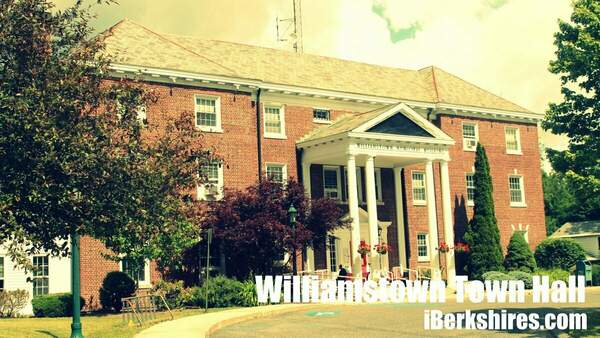Letters: Consider Other Options to Protect Spruces
 |
Letter to the Editor:
New Orleans, New York City and the Jersey shore in Williamstown
The modest Hoosic River is our version of the Mississippi but on a scale that is or would be so much easier and less expensive to manage than the mighty Mississippi has been for the city of New Orleans.
The hearts of Adams and North Adams were once flood plains and were devastated in the flooding in 1927 and again in 1948-49. The Army Corps then designed and built the present-day concrete "chutes" to protect those two communities which they have done admirably well ever since.
How much easier and less expensive (in inflation adjusted dollars) might it be to protect The Spruces and thus preserve that entire neighborhood?
With apologies in advance to all who have devoted countless hours in the pursuit of both affordable housing solutions for Williamstown and solutions to the flood-related problems at The Spruces, I want to emphasize that I have not been involved in these investigations and meetings other than peripherally and through occasional viewings of meetings on WilliNet. I am not an expert and I may also have missed some key fact-based discussions of the questions I am about to raise below.
First however, some heartfelt considerations. I watched the WilliNet replay of the most recent select board meeting and empathized with the two residents who spoke of their homes and their feelings. How many of us, how many board members could truly comprehend their feelings? Not one person on any boards that I saw, whether the trust or select board lives at The Spruces or to my knowledge, was flooded out of their homes in Irene.
How would anyone who currently owns their own home feel about being forced to give up their home and offered as an alternative the opportunity to live in a town-owned rental home? Some of the homes at The Spruces are modest, to be sure, and this is why they have provided an affordable option for people wanting to live in Williamstown. The concept originally conceived and built by Albert Bachand was to meet a need that existed and meet it has done, very well.
Because the park was built so long ago when mobile homes were much smaller than today, the original lots are small. The roads were never particularly well built and I'm sure the utilities are in much need of updating.
On the other hand, The Spruces is almost a village within the town of Williamstown and has provided a safe (aside from the storms that have occasionally disrupted life there) and very convenient location for the residents. They have a meeting hall, a swimming pool and a scenic location along the river.
Many years back, my mother-in-law purchased a home there when she moved from her own home two hours away. A former employee moved there from his home in Williamstown. I have sold a few of those homes for clients over the years. Some are clearly better and more modern than others. Some should be demolished regardless of the damage from Irene, and replaced with new homes but some are truly impressive.
The Spruces might yet have a future were it possible to protect the park from future flooding in a manner akin to the flood protection the cities of North Adams, Burlington, Vt., New Orleans and I dare say many other cities across the nation and in other countries have gained.
The undeniably convenient location The Spruces occupies for public transportation and walking distance to local shops, the attractive setting with views and proximity to the river and the pride of ownership felt and expressed by many owners causes me to want to ask why it might not be feasible to provide flood protection for the park so it can be kept right where it is.
We have examples right around Williamstown of other brooks and streams that have been deepened or banks raised to prevent flooding to the adjacent properties. The brook along the eastern side of the park that traverses under Route 2 and which overflows in flood conditions could be similarly deepened (it once was but has since been allowed to fill with growth). We were told also that runoff from across Route 2 in neighborhoods like Luce Road contributed to the flooding but that area drains into the same brook, I believe, and thus dealing with the brook might alleviate much of the problem, though of course not all.
What of the Lowry property idea we might then ask? The housing needs in the town have been thoughtfully evaluated and it may be that the Lowry property should be an additional option for affordable housing but just not to be thought of primarily as the site to relocate Spruces residents who would choose to remain where they are.
It appears very clear that the need for affordable housing units in Williamstown exceeds what the Lowry property could provide by itself and this seems to be an even more compelling reason to take another look at making The Spruces habitable through flood-protection measures.
All along the Jersey shore and in fact along coastlines all along the East Coast much re-evaluation is taking place as to how to protect communities. In some cases they may have to be relocated, in others housing will be modified to accommodate high-water conditions as is common along coastal Florida for example. A recent documentary on Singapore showed just how that city has adapted to far more frequent flooding conditions than we have ever experienced here or will ever likely experience.
Why in other words is it necessary to assume the relocation of The Spruces when there are countless examples of steps that have been taken to protect low-lying areas for human occupancy? Why give up a convenient and for all but extraordinary conditions, a highly suitable site for almost 300 homes?
Would it be possible for the town to acquire the site from the present owner, make the modifications to the site to prevent future flooding in the form of berms, cleaning out the brook to the east and who knows, even a pump station as is being used in New Orleans and New York City and to take over the maintenance of the streets? The town or housing authority could then offer sites for market-rate rents. It could also over time remove the older units, combine lots and build more permanent structures for rent to other residents.
Every option involves cost to be sure and the town is not capable of raising the money to solve every need or problem. However, if a different approach was taken and the determination was to save The Spruces, surely there would be grant money available to protect the site from future flooding.
My purpose was to raise some questions, the answers to which I do not have and to spark some further debate and investigation. The Spruces park is a remarkable housing resource that provided almost 300 dwelling units the replacement of which is almost impossible to foresee for our town. For this reason, I suggest we should take a fresh look at how to raise the needed funds to protect the existing park from future flooding so it can be kept and over time, upgraded as well.
As we continue to debate and ultimately decide, let us do our best to put the needs, rights, concerns and feelings of the residents and owners in the park foremost in our deliberations. After all, for those of us who do not live there, while a "politically correct" concern, it really doesn't affect us very directly.
The funds that FEMA would provide the town to assist with the purchase of the park could still be used for that purpose. The Lowry property could still be left on the table for future affordable housing needs but the costs that would have been incurred to buy out the residents of The Spruces could then be allocated toward protecting the park from future flooding and improving the infrastructure at the park.
The flooding problem at The Spruces is so microscopically small by comparison to so many other almost daunting problem areas throughout the nation and around the world that it seems to be eminently solvable if we take the position that The Spruces can and should be saved.
"Where there is a will, there is a way."
Paul Harsch
Williamstown
Dec. 11, 2012
Tags: affordable housing, FEMA, flood, Spruces,















